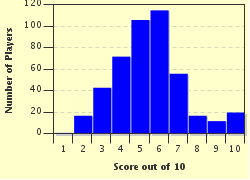Quiz Answer Key and Fun Facts
1. Architectural blueprints are an example of what type of printing process?
2. The bright blue familiarly seen in blueprints is caused by a chemical with the formula Fe4[Fe(CN)6]3 (imagine the numbers are written as subscripts, please). What name is commonly used for this color?
3. The production of a blueprint using Herschel's method starts by mixing the two chemicals potassium ferricyanide and ferric ammonium nitrate. Which of these reactions is the first step in the ensuing process?
4. To produce a blueprint, the yellow chemical mixture must be placed on a surface that can absorb the liquids. Which of these would NOT be suitable for this?
5. To produce a picture, it is necessary to place some object, such as an architectural drawing, on top of the material that has been impregnated with the color-producing chemicals, and then initiate the desired chemical reaction. Which of these is the simplest way to do this?
6. Once the material being used to produce a blueprint has had the necessary chemical reactions completed, it is necessary to stop the chemical reaction, so that the final print is stabilized. What is the name given to this stage of the process?
7. Sometimes a blueprint may turn out too light, so it may be desirable to increase the intensity of its blue color. This is most easily done by soaking it in a solution of a weak acid or an oxidizing agent. Which of these would NOT be a suitable choice?
8. Sometimes it may be desirable to reduce the intensity of the blue color when a blueprint is being processed. Which of the following common household products can be used to do this?
9. One of the reasons for reducing the intensity of the blue color in a blueprint is so that you can then soak it in another chemical to produce a new color. Which of these possible coloring agents is correctly matched with the color it will produce?
10. Horrors, you discover that your blueprint has faded after several years. Perhaps you shouldn't have had it framed and hung in that sunny spot. Which of these simple methods can be used to significantly, if not completely, restore the original color?
Source: Author
looney_tunes
This quiz was reviewed by FunTrivia editor
rossian before going online.
Any errors found in FunTrivia content are routinely corrected through our feedback system.

